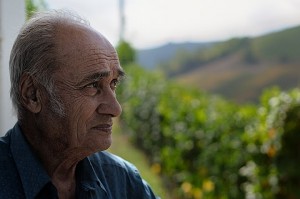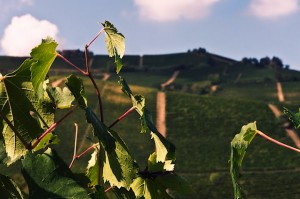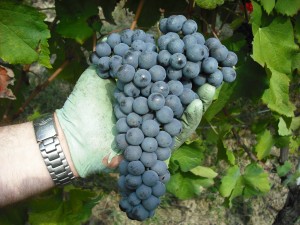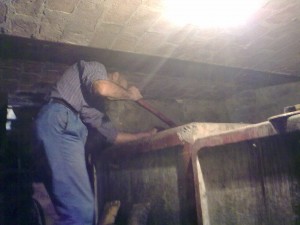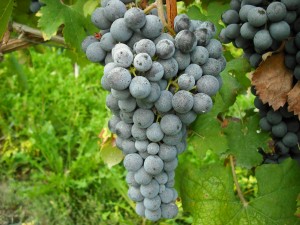Oct 25, 2009
Natural Wine Making in Piemonte Part VIII – "All Well!"
Here’s an update from Jørgen regarding our wine:
The “Felice” Nebbiolo wine is fermenting perfectly now. As of today, it’s been macerating on the skins for 3 weeks. Only one day with (3) pump-over’s. With 2 pump-overs the next day, and two more the following day… that’s it for the pump-overs.
Then Wednesday of last week (14th of October), the cap was pushed down. Wooden 4×4 planks were carefully placed on top of the cap, pushing it down a few centimeters, then the must was topped off. This technique helps the cap stay below the surface to avoid unwanted (volatile) aromas. The wooden planks were of a special type of wood found in the local river. This type of wood is not normally found in the area, and is important to mention that it’s neutral and adds no flavors to the wine. The planks were wet with the wine and dried before use.
We’re still waiting for malolactic to start and since we didn’t add anything (no sulfur nor selected yeast), it should begin more easily on it’s own. If it doesn’t start now on it’s own, it will start in the springtime. Potential alcohol at this point is around 13.7% (this is considered low in the area compared to the other Nebbiolo’s in the 2009 harvest). Jørgen visited two other producers and tasted their fermenting Nebbiolo’s. Our Nebbiolo was the most fruity and expressive according to him 🙂
Everyday approximately 10 litters has to be added to the must and topped-up because of the CO2 compacting the cap. The small cement tank has been “svinato”, pressed and the wine from this tank (the same wine of-course) is now being used to refill the to big cement tanks. Now it’s only the two big cement tanks. Igino Garberoglio is checking on the wine 3 times a day.
Jørgen is overseeing our project since he now lives in Italy. Born in Norway in 1974, Jørgen Ljøstad in my opinion is one of the greatest palates Norway has today. His interest in wine blossomed while working at the Michelin-starred Bagatelle in Oslo, Norway from 1997-2000. He studied for and passed his Sommelier exam in 2003 (which, believe me, is quite difficult in Norway). He then worked for 22 months in a well-known cellar in Barbaresco. When Jørgen came back to Norway, he landed a job with a well-established importer, Moestue Grape Selectons where he remained for a year and half until the Wine Monopoly head-hunted him. He went to work for the Wine Monopoly where he was the Portfolio Developer responsible for all wines from Italy, Portugal and Spain. In 2007 Jørgen left the Monopoly to co-found the Norwegian-based import company Non Dos AS.
